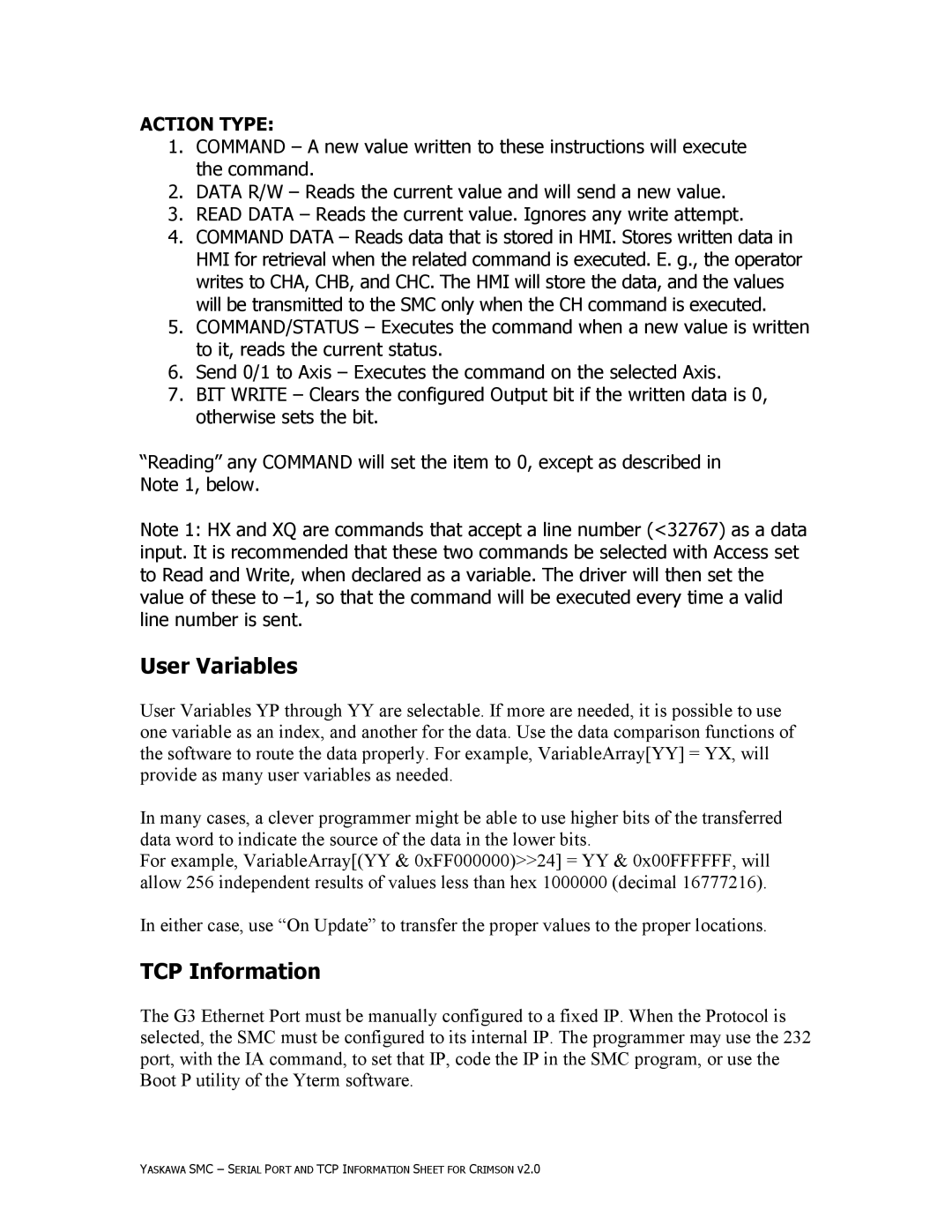ACTION TYPE:
1.COMMAND – A new value written to these instructions will execute the command.
2.DATA R/W – Reads the current value and will send a new value.
3.READ DATA – Reads the current value. Ignores any write attempt.
4.COMMAND DATA – Reads data that is stored in HMI. Stores written data in HMI for retrieval when the related command is executed. E. g., the operator writes to CHA, CHB, and CHC. The HMI will store the data, and the values will be transmitted to the SMC only when the CH command is executed.
5.COMMAND/STATUS – Executes the command when a new value is written to it, reads the current status.
6.Send 0/1 to Axis – Executes the command on the selected Axis.
7.BIT WRITE – Clears the configured Output bit if the written data is 0, otherwise sets the bit.
“Reading” any COMMAND will set the item to 0, except as described in Note 1, below.
Note 1: HX and XQ are commands that accept a line number (<32767) as a data input. It is recommended that these two commands be selected with Access set to Read and Write, when declared as a variable. The driver will then set the value of these to
User Variables
User Variables YP through YY are selectable. If more are needed, it is possible to use one variable as an index, and another for the data. Use the data comparison functions of the software to route the data properly. For example, VariableArray[YY] = YX, will provide as many user variables as needed.
In many cases, a clever programmer might be able to use higher bits of the transferred data word to indicate the source of the data in the lower bits.
For example, VariableArray[(YY & 0xFF000000)>>24] = YY & 0x00FFFFFF, will allow 256 independent results of values less than hex 1000000 (decimal 16777216).
In either case, use “On Update” to transfer the proper values to the proper locations.
TCP Information
The G3 Ethernet Port must be manually configured to a fixed IP. When the Protocol is selected, the SMC must be configured to its internal IP. The programmer may use the 232 port, with the IA command, to set that IP, code the IP in the SMC program, or use the Boot P utility of the Yterm software.
YASKAWA SMC – SERIAL PORT AND TCP INFORMATION SHEET FOR CRIMSON V2.0
